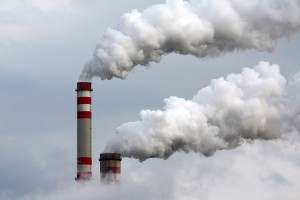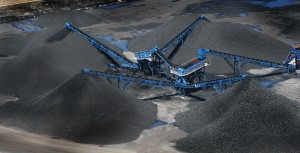Introduction
We have just witnessed another attempt at a global deal on climate change preventive action in Warsaw, with precious few achievements, and the best hopes are that a new climate treaty will be reached in Paris in 2015. Most hope that such a treaty will provide national targets in the form of hard, mandatory requirements, along the lines of the Kyoto Protocol, not the US-type vague “commitments.” It is hoped that any such agreement will also adopt some form of cap-and-trade-with-offsets mechanism to keep global warming at 2°C (3.6°F) rise over the pre-industrial period. Such a result would represent a dream come true for many. For James Hansen and others such a result is a nightmare.
In their technical, dense, yet readable, report, Assessing ‘‘Dangerous Climate Change’’: Required Reduction of Carbon Emissions to Protect Young People, Future Generations and Nature, Hansen and others argue that we need to keep the global temperature close to the upper range experienced in the current Holocene period. This represents the climate to which humans and other species have adapted over the past 11,700 years, since the last ice age. They make a compelling argument that sets an even higher bar for reaching a global climate accord.
Martin Muransky/Shutterstock.com
The Report
The European Union and the UN climate talks, in Copenhagen in 2009, have adopted the target of keeping temperature rise at 2°C (3.6°F) over pre-industrial temperatures, although the hardness of the target is open to question. The authors convert this temperature measure to a fossil fuel emissions target, using global climate-carbon-cycle model and other methodologies, and conclude that a 2°C rise is more likely with a cumulative carbon emissions limit of about 1000 gigatonnes of carbon (GtC).
Based on paleoclimate data and ongoing observations, they conclude that if global temperature is allowed to rise 2°C – 3°C (3.6°F – 5.4°F), as occurred in earlier geologic time, we will experience sea level rises from 9-25 meters (about 30-82 feet) higher than today. With such temperature rise, we would also see dramatic effects from the rapid unfolding of “slow feedbacks” and other impacts (increased release of methane and nitrous oxide) that would worsen the effects of the temperature rise. As the authors conclude: “The important point is that the uncertainty is not about whether continued rapid CO2 emissions would cause large sea level rise, submerging global coastlines – it is about how soon the large changes would begin.”
In contrast to this somewhat prevailing view, Hansen et al. report that we need to limit temperature rise, over pre-industrial times, to 1°C and carbon emissions at 500 GtC. The result would be to hold CO2 concentration levels to 350 ppm, as urged by Bill McKibben and others. Of course, reforestation and increase of soil carbon capture can offset atmospheric CO2. The authors estimate that 100GtC carbon drawdown from the atmospheric CO2 is realistic, through uptake of increased carbon by some vegetation and soils, improved agricultural practices and carbon capture and storage (CCS) facilities.
The authors estimate what fossil fuel emission reductions are needed, and when, in order to preserve a 1°C/500 GtC world, with a 100GtC storage in the biosphere and soil. They conclude that it will be necessary to reduce emissions by 6% each year, starting now, to maintain a safe environment. If we reduce GHG emissions by 6% a year and limit ourselves to using conventional oil and gas reserves, we will add only 130 GtC to the existing 370GtC emissions, and we can stay within the 1°C rise. If reductions are delayed until 2020, it will be necessary to reduce emissions by 15%/yr to achieve 350 ppm in 2100. They discuss various complications that can affect such timing, including impacts from non-CO2 GHGs.
The report analyses the effects of the 2°C/1000 GtC world, versus the 1°C/500 GtC world that we know, on sea levels, shifting climate zones, extinction of species, coral reefs, climate extremes, and human health. The litany of disasters is familiar, but the authors are showing us what and how these disasters will unfold if we adopt the most ambitious targets to date being proposed by the international political and scientific community. The litany of consequences include: sea level rise of tens of meters; political borders blocking people and human-constructed obstacles and natural barriers, including mountains and coast lines, blocking other species from escaping the disasters; up to 50% of species gone; extreme weather events that will extend and deepen losses and damages well beyond what we are seeing now and we cannot even manage current levels of extreme events; health effects like what we saw when China gave out free coal for winter heating to residents of North China, between 1950 and 1980, with 500 million residents losing more than 2.5 billion life years and an added reduction in life expectancy of 5.5 years from the air pollution.
iRabel8/Shutterstock.com
The dangers of a 2°C/1000 GtC world are masked in part because the fossil fuel carbon in the atmosphere is long-lived and the ocean absorbs and stores 90% of excess carbon in the atmosphere. Those conditions assure that “slow” feedbacks, like ice sheet disintegration, melting of permafrost, release of methane from methane hydrate, will have time to activate. In other words, there is additional climate change already in the pipeline even if no more carbon is emitted into the atmosphere. So we may not see what is coming until it is here, and too late to alter it. The authors describe it as “climate change running out of humanity’s control.” Most climate simulations ignore these slow feedbacks, but a 2°C rise is likely to bring them into play, and a 1°C rise is likely to avoid them.
The authors argue that the extraction and burning of all or even most of our fossil fuel resources “would lead to a very different planet than the one that humanity knows.” At 2. That means that drilling of unconventional, or hard-to-get, fossil fuels in places like the Arctic, in forms like tar sands, and through procedures like fracking are off limits. If most of the fossil fuels are burned, we can expect sea level rise of as many as tens of meters (three dozen feet and more).
Roberto castillo/Dreamstime.com
As for geo-engineering fixes to climate change, the authors point out that there is too much uncertainty about the feasibility of such proposed solutions and their projected cost would be enormous. One estimate has a cost of $100-400 trillion to reduce the amount of CO2 in 2100 by 52ppm. If people want to rely on geo-engineering fixes, then those estimated costs should be added to the price of fossil fuels now so we can build up a financial reserve to pay for the costs of such fixes.
While the report is very much a work of science, Hansen and the other authors do not run from the policy implications of what science tells them. Whatever the costs incurred to mitigate climate change damages, now or in the future, the question is, who is going to pay for these costs. Certainly the past and present extraction and usage of fossil fuels, and their emissions, is relevant to the cost issue, which is at the same time a matter of intergenerational and human rights. With regard to usage, we see that considering only current annual CO2 emissions, China emits 26.9%, the US 14.5%, and UK 1.3%. In considering historic emissions, from 1751-2012, the US emitted 26%, China 10.7%, and the UK 5.4%. On a per capita basis in 2012, Australia leads, with the US and Canada close behind, and China at a middle point. On a per capita basis for 1751-2012, the US and UK are the leaders while China is toward the bottom.
The authors do not advance any particular equitable scheme for assigning responsibility, or costs, for the injustices associated with someone’s pollution causing grief, loss and destruction for others. But they do proffer an economic way to help preserve a 1°C/500GtC/350ppm world. That fix is an international carbon tax.
Putting a price on carbon is the fundamental step: “Fossil fuels are cheap only because they do not pay their costs to society and receive large direct and indirect subsidies.” They suggest a tax starting at $15/tCO2 rising $10/tCO2 each year. For the US, such a tax would reduce emissions by 30% within 10 years. Other steps include research, development and demonstration (RD&D) investment, expanded renewable energies, energy efficiency measures, investment in and implementation of carbon capture and storage systems.
Controversially, at least for many, Hansen and the others offer nuclear energy as one option for maintaining our present climate — at least modern light-weight reactors that use convective cooling to eliminate the need for external cooling sources, and fast reactors. It should be noted that the nuclear option is accorded parts of only several paragraphs in the 26-page report. Moreover, the authors point out that different countries have taken divergent paths to effect rapid changes to address climate change. In one decade, Germany increased non-hydroelectric renewable electric energy from 4% to 19%, and decreased nuclear power from 29% to 18%, while France in a decade increased nuclear power 15-fold, with nuclear electric power increasing from 8% to 70%. The authors conclude that “Given the huge task of replacing fossil fuels, contributions are surely required from energy efficiency, renewable energies, and nuclear power, with the mix depending on local preferences.” At 19. [Emphasis added] See Sources for material critical of the nuclear option.
Conclusion
It has taken us over 10,000 years to adapt to the present Holocene climate, and we are setting out to intentionally destroy that climate over a 100-200 year period. At a telling moment, the authors charge that our parents did not know the risks to which they put their children — us — as a result of their reliance on fossil fuels, but we cannot pretend that we do not know what even more dangerous threats we are creating for our children. Our children will stand in judgment over us. And with the mass extinction of many species “we will leave a more desolate, monotonous planet for our children, grandchildren, and more generations than we can imagine.” At 7.
The authors make compelling arguments that anything less than keeping climate warming at 1°C (1.8°F) rise, and emissions at 500GtC, through an international carbon tax and other measures, is “foolhardy,” although “suicidal” might have been a better characterization.
The authors surmise that the 2°C rise is a target chosen as a deep compromise, with the hopes that once such a target was widely accepted and implemented, that more ambitious targets would emerge. They reject such a path and maintain that “…our objective is to define what the science indicates is needed, not to assess political feasibility.” It’s a tough stance, and courageous, and needed.
Sources
Hansen J, Kharecha P, Sato M, Masson-Delmotte V, Ackerman F, et al. (2013) Assessing ‘‘Dangerous Climate Change’’: Required Reduction of Carbon Emissions to Protect Young People, Future Generations and Nature. PLoS ONE 8(12): e81648. doi:10.1371/journal.pone.0081648 [3 Dec 2013]. www.plosone.org/article/info%3Adoi%2F10.1371%2Fjournal.pone.0081648
Aoife O’Grady, “Intersections: Global Climate Talks, Irish Reluctance, and EU Ambitions,” Commentary, irish environment (December 2013). www.irishenvironment.com/commentary/aoife-ogrady-intersections-global-climate-talks-irish-reluctance-and-eu-ambitions/
Joe Romm, “To Those Who Want To See Nuclear Power Play A Bigger Role In Climate Action,” Climate Progress (4 Nov 2013). thinkprogress.org/climate/2013/11/04/2882671/nuclear-power-climate/
Tina Casey, “What’s All This About The World Bank Not Financing Any More Nukes?” the energy collective (4 Dec 2013). theenergycollective.com/tinacasey/311626/what-s-all-about-world-bank-not-financing-any-more-nukes





No comments yet, add your own below